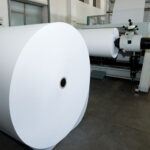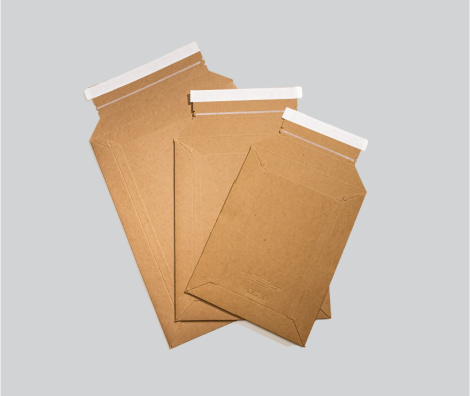Transforming the Paper Packaging Industry with Sustainable, Durable, Innovative, and Eco-Friendly Solutions for a Greener Future Worldwide

Paper Packaging Industry
The paper packaging industry plays a pivotal role in the global supply chain, addressing the need for sustainable, cost-effective, and versatile packaging solutions. With increasing consumer awareness and regulatory mandates pushing for eco-friendly alternatives, the demand for paper-based packaging is witnessing significant growth. This paper explores the complexities of the paper packaging industry, focusing on its evolution, market trends, applications, challenges, innovations and future prospects.
Evolution of the Paper Packaging Industry
The origins of the paper packaging industry can be traced back to ancient China, where the earliest forms of paper were developed around 100 AD. However, the commercial use of paper for packaging began in the 19th century, spurred by advancements in papermaking technology and the rise of industrialization. 19th century: The introduction of machine-made paper revolutionized the industry, making paper products more accessible and affordable.
20th century: Growth in the consumer goods and retail sectors increased demand for paper packaging, especially for food and beverages. 21st century: Environmental problems and sustainable development initiatives highlighted paper packaging in the foreground as a viable alternative to plastic.
Types of Paper Packaging
Paper packaging is diverse and covers a wide range of products for various industries. The main types include:
Corrugated Boxes: Made from corrugated sheets, these boxes are widely used for merchandise packaging and e-commerce. Folding cartons: Lightweight and versatile, folding cartons are often used for retail packaging of items such as cereals, cosmetics, and pharmaceuticals. Paper Packaging Industry
Paper bags and pouches: Available in a variety of sizes, they are often used in the food industry and in retail stores.
Liquid Packaging Cartons: Designed to hold liquids like milk, juice, and soups, these cartons often include layers of polyethylene or aluminum for added barrier protection.
Flexible Paper Packaging: Includes pouches, wraps, and other flexible solutions that combine paper with coatings or laminates for enhanced functionality.
Paper Packaging Applications
Paper packaging is versatile, making it suitable for many industries.
Food & Beverage: Used for take-out containers, bakery boxes, and beverage cartons.
E-commerce: Durability and recyclability have led to corrugated boxes and paper gap fillers dominating the industry. Health and pharmaceuticals: Folding boxes and light bulb bags provide safe and hygienic packaging of pharmaceuticals and medical devices.
Retails and mode: Premium paper packages and cardboard boxes improve brand value and customer service quality. Personal care: Cosmetics and skin care products are increasingly using environmentally friendly paper-based solutions.
Market Trends and Growth Drivers
The global paper packaging market is experiencing robust growth due to several key trends and drivers:
Sustainability Push: Governments and organizations worldwide are phasing out single-use plastics, boosting the demand for paper-based alternatives.
E-Commerce Boom: With the rise of online shopping, the need for protective and sustainable packaging has soared. Consumer preferences: Modern consumers prefer eco-friendly products, which is why brands are increasingly adopting paper packaging.
Technological advancements: Innovations such as water-resistant coatings and biodegradable materials are expanding the capabilities of paper packaging.
Environmental impact and sustainability
Although paper packaging is widely recognized as an environmentally friendly option, its production and disposal still pose challenges.
Renewable resource: Paper is made from wood pulp, a renewable resource, but deforestation remains an issue.
Recycling: Most paper packaging is recyclable, but pollution and lack of infrastructure can reduce recycling rates. Energy and water use: The production process is resource-intensive and requires large amounts of energy and water. Paper Packaging Industry .
Biodegradable: Unlike plastic, paper decomposes naturally, reducing the impact on landfills.
Challenges facing the industry
Despite its advantages, the paper packaging industry faces many challenges.
Raw material costs: fluctuations in pulp and paper prices affect profitability.
Competition: alternatives such as bioplastics and recycled materials are becoming more competitive. Infrastructure: The insufficient environment for processing and management of waste in certain regions limits the effectiveness of paper packaging.
Problems of quality: paper packaging can be less durable and waterproof compared to plastic, requiring additional processing or coatings.
Packing Industry

Innovations and Technological Advancements
Innovation is driving the evolution of paper packaging, addressing its limitations and expanding its applications:
Coatings and Barriers: Development of bio-based and compostable coatings improves water and grease resistance.
Digital Printing: Enhances customization and branding opportunities for businesses. Lightweight materials: Reducing the weight of paper packaging reduces transportation costs and carbon emissions.
Smart packaging: Implementing RFID tags and QR codes for improved tracking and consumer engagement.
Key industry players
Several companies dominate the paper packaging market using their scale and their experience:
International Paper Company: one of the largest manufacturers of paper packaging solutions in the world.
Wesser: Main supplier of corrugated and general public packaging. Smurfit Kappa: Known for innovative and sustainable paper packaging designs.
DS Smith: Specializes in sustainable packaging for e-commerce and retail. Mondi Group: Offers a wide range of paper and flexible packaging.
. Regional Market Analysis
North America: High demand driven by e-commerce and sustainability initiatives. Europe: Strict environmental regulations and consumer awareness are driving growth.
Asia Pacific: Rapid industrialization and urbanization make it the fastest growing market. Latin America and Africa: Emerging markets with huge expansion potential.
The paper packaging industry is at a critical crossroads, balancing environmental benefits with the need for efficiency and innovation. As global priorities shift towards sustainability, paper packaging will remain a vital component of the supply chain to meet the changing demands of both businesses and consumers.
The global paper packaging industry has witnessed unprecedented transformation in recent decades, driven by growing consumer demand for environmentally friendly solutions, advances in materials science and changing government policies. Paper Packaging Industry . The industry’s resilience and ability to adapt to global challenges, including climate change, have made it a cornerstone of sustainable development. Below, we take an in-depth look at five key dimensions that underscore the expansive reach of this booming sector.

The role of the circular economy in paper packaging
One of the defining features of the paper packaging industry is its adherence to the principles of the circular economy. Unlike a linear economic model that relies on single-use production and disposal, the circular economy emphasizes reuse, recycling and waste minimization. Paper packaging fits perfectly into this paradigm, offering a sustainable alternative to non-biodegradable materials.
Recycling process: Paper recycling rates have reached significant levels around the world, with regions such as Europe seeing recycling rates exceeding 70%. This efficiency is achieved through well-established collection and recycling systems that transform used paper into new packaging materials. Paper Packaging Industry
Industrial Symbiosis: Innovations in industrial symbiosis allow waste from one production process to be used as raw material for another, further reducing the environmental impact. Policy interventions: Governments around the world are promoting circular economy models by incentivizing recycling efforts, introducing taxes on non-recyclable packaging, and encouraging research into biodegradable coatings for paper packaging.
Technological innovations to improve paper packaging
The integration of advanced technologies has transformed the paper packaging industry, enabling it to meet the diverse needs of consumers and the industry. Modern advancements not only improve the functionality of paper packaging, but also pave the way for entirely new applications. Nanotechnology: Incorporating nanomaterials into paper products improves properties like strength, flexibility and barrier properties, making paper packaging suitable for high-demand applications like storing liquids.
Biodegradable polymers: Mixing biodegradable polymers with paper can improve water resistance, extend shelf life and maintain composability . Paper Packaging Industry
Additive Manufacturing: Also known as 3D printing, this technology is being explored to create custom packaging designs using paper-based materials, reducing production waste and costs.
Intelligent Packaging: Innovations such as embedded QR codes and temperature-sensitive labels provide consumers with real-time information about the product\’s condition, enhancing user experience and safety.
The socio-economic impact of the packaging industry
The paper packaging industry is not only an environmental good; It is also a significant contribution to global socio-economic development. Using millions of workers around the world, industry is resistant to existence, contributing to the use of responsible resources.
Community development: Paper mills and recycling facilities often invest in community wellness programs, including education, healthcare, and infrastructure development, to support the communities where they operate. Economic Growth: With a global market size predicted to exceed $500 billion by 2030, the paper packaging industry continues to be a significant contributor to many countries’ GDP.

A strategic roadmap for the future
The paper packaging industry must take a future-proof approach to sustain growth and meet changing global demand. Key strategies include:
Collaborative efforts: Develop partnerships between governments, private companies and NGOs to improve recycling systems and develop innovative materials. Sustainable forestry: Ensure responsible sourcing of raw materials through certification programs such as FSC (Forestry Stewardship Council) and PEFC (Programme for the Endorsement of Forest Certification).
Consumer engagement: Educate consumers on the benefits of paper packaging and encourage responsible recycling practices to maximize recycling rates. Global standardization: Creating international standards for optimizing processes and reducing waste around the world.
- Integrating the circular economy
The principles of the circular economy have become an essential element for the paper packaging industry. This approach emphasizes material reuse, recycling, and minimal waste to ensure long -term sustainability. For example, a paper recycling process has been improved to maximize fiber recovery, and can recycle up to seven times before losing strength. Paper Packaging Industry
2. Regional Market Challenges
While developed markets are leading the way in sustainability efforts, developing regions face infrastructural and economic barriers that limit their recycling capacity. For example, Europe has advanced recycling facilities, but Africa and South Asian countries often lack the system required for separation and processing of waste. It is important to work on these gaps through international cooperation and investment. Paper Packaging Industry
3. Technological jump in the context
The frame has become an important trend in paper packaging due to achievements in the field of digital printing and design. Brands are now using paper packaging not only for functionality, but also as a medium for storytelling and marketing. High-resolution printing allows for bold graphics and detailed information, increasing consumer engagement.
4. Global cooperation in sustainability
The paper and packaging industry is increasingly recruiting global executives, including the purpose of sustainable development (Cur), to comply with more environmental and social purposes. Collaborative efforts between governments, nonprofits and businesses are essential to promoting sustainable practices throughout supply chains.
- New frontiers in materials science
Research in materials science opens new possibilities for paper packaging. Scientists are investigating how to use agricultural waste materials such as wheat straw and sugarcane pomace as alternative raw materials for paper production. These innovations reduce dependence on wood pulp and help reduce waste.

Additional Perspectives on Sustainability and Business Strategies
To dive deeper into the content, let’s dive into more strategic elements of the paper packaging industry and its future.
- The Role of Consumer Behavior
Today’s consumers are increasingly placing importance on sustainability when choosing products. Paper packaging companies are aligning their strategies with these expectations. Eco-friendly certifications, such as FSC (Forest Stewardship Council) and PEFC (Programme for the Endorsement of Forest Certification), are now key selling points. Companies are also adopting transparent communication strategies to educate consumers about the environmental benefits of paper packaging.
2. Government policies and corporate responsibility
The regulatory framework plays a vital role in shaping the industry. Governments around the world are tightening regulations on plastic use and encouraging a switch to paper packaging. At the same time, corporate responsibility initiatives such as zero waste goals and carbon neutral programs are driving investment in sustainable packaging solutions.
3. Automation and Industry
Automation and digitalization are transforming the paper packaging manufacturing process. Industry 4.0 technologies such as IoT and AI are being integrated to optimize production, reduce waste, and improve quality control. Predictive analytics and real-time monitoring systems enable manufacturers to increase efficiency and reduce downtime.
4. Challenges of implementing sustainability at scale
Implementing sustainable practices remains a challenge due to cost and logistical considerations. While large companies can afford to invest in cutting-edge technology, small and medium-sized enterprises often face financial obstacles. Collaborative networks and public-private partnerships are essential to bridge this gap.
5. Educational Initiatives and Workforce Development
As the industry evolves, the need for skilled workers to manage new technologies and sustainability initiatives increases. To meet this demand, educational programs are being developed with emphasis on packaging design, materials science, and environmental stewardship. Companies are also investing in employee training programs to improve the skills of their workforce.
The paper packaging industry is at a crossroads of opportunity and responsibility. As global demand for sustainable solutions continues to grow, the industry must innovate and adapt to meet changing consumer expectations and environmental standards.
By embracing circular economy principles, developing technological capabilities and fostering global collaboration, the paper packaging industry is well positioned to lead the way to a greener and more sustainable future. As technology advances and global policies support eco-friendly alternatives, the paper packaging industry will experience exponential growth and open a new chapter in sustainability.

Emerging Trends Shaping the Future of Paper Packaging
The paper packaging industry is undergoing significant transformations, with emerging trends shaping its trajectory:
- Bio-based Alternatives
The development of bio-based paper packaging materials is a game changer. By incorporating polymers from renewable resources, manufacturers can improve barrier properties without compromising recyclability. For example, bio-based coatings offer moisture resistance while maintaining environmental compatibility. 2. AI-based sustainable development strategies
Artificial intelligence is being used to improve the efficiency of sustainability efforts throughout the supply chain. AI tools analyze data to predict consumption trends, optimize resource allocation and minimize waste. Additionally, AI-based systems monitor production processes to ensure compliance with environmental standards. 3. Demand for minimalist packaging
Consumer demand for minimalist design is driving a move away from excessive packaging. This trend not only helps reduce material usage but also appeals to environmentally conscious buyers: clean, simple designs with an eco-friendly message are becoming increasingly popular. 4. Geographical expansion
The paper packaging industry is expanding its presence in emerging markets where there is growing demand for sustainable solutions. Investing in local production facilities helps reduce transportation costs and boost economic development in these regions.
- Hybrid Packaging Solutions
Hybrid packaging that combines paper with other materials is gaining popularity, for example paper boxes with reinforced edges or laminated layers that give them extra strength while still being recyclable. These solutions balance functionalities with environmental responsibility.
The paper packaging industry is at a crossroads between opportunity and responsibility. As global demand for sustainable solutions continues to grow, the industry must innovate and adapt to meet changing consumer expectations and environmental standards.
By embracing circular economy principles, developing technological capabilities and fostering global collaboration, the paper packaging industry is well positioned to lead the way to a greener and more sustainable future. As technology advances and global policies support eco-friendly alternatives, the paper packaging industry will experience exponential growth and open a new chapter in sustainability.
The paper packaging industry is often hailed as an eco-friendly alternative to plastic. However, its environmental impact is not without its challenges:
Renewability: Paper is made from wood pulp, a renewable resource. Sustainable forestry practices ensure that paper production does not result in deforestation.
Recyclability: Paper packaging is highly recyclable, with many countries achieving recycling rates of over 60%. Biodegradable: Unlike plastic, paper decomposes naturally, reducing landfill waste.
Challenge: Paper production is resource-intensive, requiring large amounts of water and energy. Additionally, the carbon footprint of transporting paper products can be significant due to their weight.





